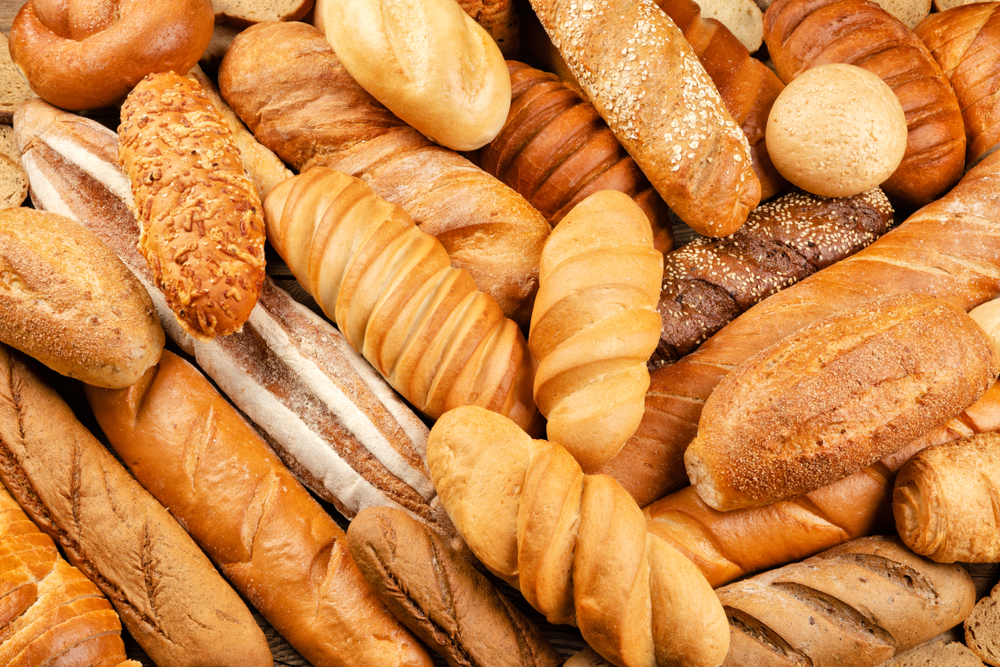This week (5-11 September) is Migraine Awareness Week. Migraines are more than just a ‘headache’: for millions of people, the health condition can be entirely debilitating. While there is still no definitive ‘cure’ for migraines, we chatted to the experts who revealed the best migraine treatment methods, which help to prevent migraine attacks and alleviate pain when one does strike. From the traditional methods of herbal remedies to the more modern techniques, like Botox…
Click here for our guide on the signs, symptoms, causes and diagnosis of migraines!
1. Traditional herbal remedies used for migraine treatment
Different plants and herbs offer a wide range of health benefits. For migraines, the following herbal remedies are commonly used as migraine treatment options:
Rhodiola rosea
According to nutritional therapist, Suzie Sawyer: ‘The herb Rhodiola rosea, has long been used in traditional herbal remedies. Known as an adaptogen (just like ginseng), Rhodiola has a balancing effect on the body, plus helps overcome feelings of anxiety and fatigue, and could prove useful in the battle against migraine.
Try…Vitano Rhodiola (£9.90)
Feverfew
Feverfew is another herb that has been shown to possess migraine alleviating properties. Dr Sarah Brewer, medical director at Healthspan, explains: ‘In clinical trials, 70 per cent of people taking feverfew leaf extract found it either prevented headaches or lessened their severity, as well as related symptoms of nausea and vomiting.
‘In one trial, involving 170 people with migraine, taking feverfew extracts for 16 weeks reduced the average number of migraine attacks per month by 1.9 (compared with 1.3 in those on placebo). In three out of four trials, feverfew extracts lessened the severity of headaches as well as related symptoms of nausea and vomiting.’
Try…Healthspan FeverFew Migraine Relief (£16.95)

Some supplements and herbal remedies can treat and prevent migraines.
2. Supplements for migraine treatment
Research has revealed that certain supplements, vitamins and minerals may work as a migraine treatment. This includes:
Magnesium
According to Dr Sarah Brewer: ‘Low magnesium intakes have been associated with migraine headache. Magnesium supplements have been shown to reduce migraine attack frequency and severity compared with pre-treatment levels, and were significantly lower than in those taking placebo.
‘A small trial involving 20 women with premenstrual migraine found that taking magnesium (360mg/day) during the luteal phase of two menstrual cycles significantly reduced the number of days with headache compared with placebo.’
Try…Healthspan Magnesium 375mg
5-HTP
Derived from the amino acid l-tryptophan, 5-Hydroxytryptophan (5-HTP) is converted in our bodies into the brain chemical messenger serotonin, a natural neurotransmitter that influences a variety of bodily functions, including sleep, appetite and mood.
According to Dr Sarah Brewer, 5-HTP has been used to help prevent headaches and migraines: ‘By boosting serotonin production it promotes vaso-constriction in the brain to relieve pounding migraine headaches linked with vasodilation. 5-HTP is also thought to increase pain thresholds by increasing levels of endorphins – the brain’s own morphine-like painkillers.
‘In a study involving 78 people with tension headaches, taking 5-HTP for 2 weeks there was a significant reduction in the need for analgesics in when taking 5-HTP than when taking placebo.’
Try…Healthspan 5-HTP 100mg (£13.95)
3. Foods and drinks to avoid
According to Suzie Sawyer, what we eat has a massive effect on overall health. In particular, certain foods or additives used in food processing are known to be problematic to migraine sufferers. The following foods are potential triggers for migraine attacks:
- Aged cheeses (these contain the amino acid, tyramine, which is a known migraine trigger)
- Red wine
- Beer
- Fermented meats
- Sauerkraut
- Mushrooms
- Chocolate
- Miso
- Soy sauce – Suzie explains: ‘Monosodium glutamate (MSG), generally an ingredient in soy sauce is another known trigger, therefore Chinese foods are a big ‘no-no’.’
- Caffeine (teas, coffees and fizzy drinks)
- Citrus fruits
- Cultured dairy products such as kefir and yoghurt
- Shellfish
- Wheat-based foods (wheat is a known allergen).
Rather than cutting all of these out at once, you could try an elimination diet to identify your personal triggers. For example, you could try cutting out all wheat-based foods first (including breads, pastas and cereals), to see if this is triggering your migraines.
Don’t fret if you do need to cut certain foods out of your diet. There are plenty of healthy, migraine-friendly foods out there! Suzie recommends: ‘Great protein foods to include are chicken, turkey, eggs, all fish (not tinned), quinoa, beans, almonds and cashews, plus lots of colourful fruits and veggies such as broccoli, kale, carrots, apples, beetroot, sweet potatoes, pineapple, watermelon and blueberries!’
Click here to discover how the keto diet could help to relieve migraines.

Wheat-based foods are a potential trigger for migraines.
4. Balance your hormones to prevent migraines
Did you know, hormonal fluctuations are one of the most common causes of migraines in women? While these fluctuations naturally occur around puberty, period-time, pregnancy, and menopause, certain diet and lifestyle choices can also cause our hormones to go out of whack.
Suzie Sawyer explains: ‘It’s important to recognise that nothing works in isolation within the body and one body system is closely related to another. None more so when discussing hormones are those involved with blood sugar balance. These relate very closely to sex hormones, sleep, appetite, mood, stress, inflammation and so much more.
‘It’s especially important when trying a migraine treatment to keep your blood sugar levels in good balance. This means eating protein at every meal, avoiding stimulants such as caffeine and alcohol and reducing intake of highly refined sugary foods. These often contain sweeteners, another known migraine aggravator.’
Click here for more information on hormone imbalance!
5. Avoid exposure to certain environmental factors to manage migraines
Certain environmental factors can cause a migraine attack to strike. This can include bright lights, flashing lights, lots of noise or even strong smells. Suzie Sawyer recommends identifying your environmental triggers and avoiding certain situations with these as much as possible.
To identify your triggers, Suzie suggests: ‘keep a daily diary noting your routine, weather patterns, food and any symptoms.’

Keeping track of your symptoms can help you to identify your triggers.
6. Improve your sleep quality to prevent migraine attacks
The quality and quantity of sleep we get can affect our mood, energy levels, appetite and overall well-being. In other words, sleep is super important! Poor sleep can also contribute to migraine attacks, especially if combined with late-night screen time.
Suzie Sawyer recommends: ‘Sleep needs to be prioritised with electronic devices turned off at least two hours before bedtime, and a strong bedtime routine put in place. You could also try taking an herbal remedy before bed. Try one that combines Valerian and Passionflower, such as Bonuit Sleep Aid (£8.50). These tablets will help you to get to sleep more quickly and also sustain sleep.’
7. Move and stretch to manage migraines
A sedentary lifestyle puts strain on the joints in our neck and back, which can cause headaches and migraine attacks. Regular movement and stretches helps to keep your joints limber.
As Dr Xandra Middleton, co-founder of adio Health, explains: ‘The joints in your body are like parts in a machine. When they move, they oil and lubricate themselves. If they are not regularly moved, as a result of a sedentary lifestyle, they get stiff, and can start to wear out and rust.
‘To remedy this, simply try doing 20 seconds of exercise to target the three main areas of your spine, throughout the day, to relieve any tension in these areas. Two exercises for this are simply turning your neck from side to side with a very slight look down. This stretches out the back of the neck. Repeat this slowly two to three times.
‘Then, roll big circles with your shoulders back and forth; again two to three times. Just repeating these simple movements every hour can help to make you much more flexible and keep those joints moving and mobile.’
Click here to discover more great stretches for relieving and preventing migraines!

Put an ice pack on your neck when you feel a migraine starting.
8. Try ice therapy for a migraine treatment
We’re often told to use ice whenever dealing with pain from an injury, but what’s the science behind it? Dr Xandra Middleton explains: ‘Ice is a natural anti-inflammatory, which means it reduces swelling. While there are numerous contributing factors to the cause of a migraine, a big part of them is due to swelling either around the joints or discs of the neck.
‘Putting an ice pack on your neck can naturally help to reduce that swelling and give relief. While many people think applying heat is a good idea, it is a natural inflammatory, and most patients will respond better to ice.
‘Next time you feel a migraine coming on, try putting an ice pack (or a bag of frozen peas) at the top of your neck. Make sure there is a layer of clothing between you and the ice pack, or wrap your pack in a towel. Try and keep the ice pack there for 15-20 minutes. This can dramatically help cut the frequency and intensity of your migraines.’
9. Could botox be a cure for migraines?
New research suggests that Botox may be an effective migraine treatment. Cosmetic nurse, Nina Prisk, has seen an 80% rise in patient enquiries for the medical treatment of Botox to treat migraines and headaches. Nina explains: ‘When administered by a trained, qualified and experienced practitioner, Botox can have extremely effective results for alleviating headaches and migraines.
‘I believe that Botox is only available on the NHS for people with chronic migraines if they’ve tried at least three other treatments. Talk to your GP if you think you’re eligible and they can arrange for a referral. Alternatively, there are lots of qualified practitioners who offer this privately.’

Self-massaging with a ball can ease tension in the neck and shoulders, which is associated with migraines.
10. Self-massage: at-home migraine treatment
Next time you’re dealing with a migraine, try this self-massage technique from Dr Xandra Middleton:
- ‘You can use a spiky massage ball for this if you have one (this will help to relieve tension, release lactic acid, and reduce migraine pain) or if not, any firm ball will do. Ideally you want something about the size of a tennis ball, but something a little larger or smaller can also do the trick.
- ‘Place the ball behind your shoulder, near your neck and lean back onto it against a wall. As you put more of your body weight against it, it may feel uncomfortable, but this should start to ease after a few seconds.
- Work the ball into different spots in your upper back (never use one directly on your spine). You can also do this lying on the ground, if it’s more comfortable.
Try doing this self-massage migraine treatment at the end of the day, before you go to bed, to prime your mind and body for sleep.







